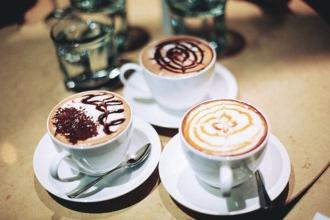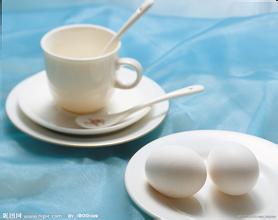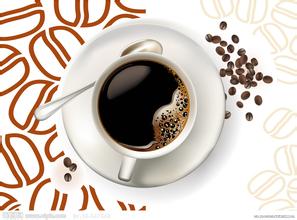Delicious and slightly aromatic Kenyan coffee flavor Taste Manor characteristics Fine coffee medium
The Kenyan flag is based on the flag of the African National Union of Kenya before independence.
Kenyan flag
Kenyan flag
And designed. It is rectangular, with a ratio of length to width of 3:2. From top to bottom, it is made up of three parallel horizontal rectangles of black, red and green, with a white edge above and below the red rectangle. The pattern in the middle of the flag is a shield and two crossed spears. Black symbolizes the Kenyan people, red symbolizes the struggle for freedom, green symbolizes agriculture and natural resources, white symbolizes unity and peace; spear and shield patterns symbolize the unity of the motherland and the struggle for freedom Kenya maintains a presidential system of government. Since independence, the Kenyan League has been in power for a long time. After changing to a multi-party system in 1991, the Kenyan League won two consecutive multi-party elections in 1992 and 1997, and Moi was re-elected president. In the third multi-party general election held in December 2002, the opposition coalition National Rainbow Alliance (all League) defeated the Kenya League, Kibaki was elected president, and the League won a majority of seats in parliament. After the general election in December 2007, national riots were caused by disputes over the election results between the ruling National Unity Party and the opposition Orange Democratic Movement. Under the mediation of former UN Secretary General Kofi Annan, the two parties to the dispute signed the Agreement on the principles of Partnership of the Coalition Government on February 28, 2008 and formed a coalition government on April 13. The leader of the ruling party, Mwai Kibaki, is president, and the leader of the opposition, Odinga, is the new prime minister. In March 2013, Kenya held a new general election, "Jubilee Alliance" candidate Kenyatta defeated the "Alliance for Reform and Democracy" candidate Odinga, was elected the fourth president of Kenya. On April 9, Kenyatta was sworn in as the House of Representatives, composed of the Speaker of the House of Representatives and 349 members, including 290 elected members, 47 elected women representatives representing 47 counties and 12 designated members (distributed according to the proportion of seats in the National Assembly). The Speaker of the House of Representatives and the Deputy Speaker of the House of Representatives are nominated by each party from non-members and members of their own party respectively and elected by all members of the House of Representatives. The largest political party or coalition leader in the House of Representatives is the majority leader, and the second largest political party or coalition leader is the minority leader. The main functions of the House of Representatives are: legislating, determining the distribution of national taxes, supervising state expenditure, supervising the government, approving wars and extending the state of emergency, impeaching the president and vice president, approving important presidential appointments, and so on. The speaker of the House of Representatives is Muturi of the Jubilee Alliance
The Kenyan government takes the coffee industry very seriously, where it is illegal to cut down or destroy coffee trees. Kenyan coffee buyers are world-class high-quality coffee buyers, and no other country can grow, produce and sell coffee on a continuous basis like Kenya. All coffee beans are first acquired by the Kenya Coffee Commission (CoffeeBoardofKenya, CBK), where they are identified, graded, and then sold at weekly auctions, where they are no longer graded. The Kenya Coffee Commission only acts as an agent to collect coffee samples and distribute them to buyers so that they can determine the price and quality. The auction in Nairobi is for private exporters, and the Kenya Coffee Commission pays growers a price below the market price. The best coffee grade is bean berry coffee (PB), followed by AA++, AA+, AA, AB and so on. The fine coffee is shiny, delicious and slightly alcoholic. Auctions are also organized to meet the needs of dispatchers. This kind of auction usually has a small auction volume (3-6 tons each), with samples with the grower's logo for buyers to enjoy. After the auction, the exporters pack according to different flavors, different qualities and the quantity required by the blenders. This provides a great deal of flexibility for the dispatcher. Quality-conscious Germans and Scandinavians are long-term buyers of Kenyan coffee.
On an international scale, the increase in the number of Kenyan coffee is obvious, with exports of 800000 bags in 1969-1970 and increased to 2 million bags in 1985-1986. The general yield is stable at 1.6 million bags, with an average yield of about 650kg per hectare. Even before coffee prices skyrocketed, the average price of coffee in Kenya had been rising. Prices in 1993-1994 were 50% higher than they were 12 months ago. The rise in prices is mainly the result of increased demand.
Kenyan coffee
Kenyan coffee
Some buyers, especially Japanese businessmen, have expressed dissatisfaction with the Kenyan coffee industry system. Some businessmen say that the quality of coffee in the country has declined, and point out that buying directly from farmers may be a way to improve the quality. But in any case, Kenya's detailed rules and regulations and sound procedures are a model for all coffee producing countries to learn from.

Important Notice :
前街咖啡 FrontStreet Coffee has moved to new addredd:
FrontStreet Coffee Address: 315,Donghua East Road,GuangZhou
Tel:020 38364473
- Prev

Introduction of fragrant and delicious Nicaraguan coffee with its flavor and taste
Since July 1927, Augusto. Cesar. Sandino led the people in a guerrilla war against the US occupation, forcing the US military to withdraw in 1933. On February 21, 1934, the Commander of the Nicaraguan National Guard, Anastacio. Somocha. Garcia assassinated Sandino at the behest of US President Roosevelt. He became president in 1936 and has been pro-American for more than 40 years since then.
- Next

Galapagos Coffee introduction
In 1875, ManuelJ.Cobos, an indigenous Ecuadorian, began to grow Arabic bourbon coffee trees in the Hasunda Coffee Garden (HaciendaElCafetal) in San Cristobal. Coffee production in the Galapagos Islands: coffee is grown in San Cristobal (SaintCristobal). Inner species of Hasunda Coffee Garden (HaciendaElCafetal) in San Cristobal
Related
- Detailed explanation of Jadeite planting Land in Panamanian Jadeite Manor introduction to the grading system of Jadeite competitive bidding, Red bid, Green bid and Rose Summer
- Story of Coffee planting in Brenka region of Costa Rica Stonehenge Manor anaerobic heavy honey treatment of flavor mouth
- What's on the barrel of Blue Mountain Coffee beans?
- Can American coffee also pull flowers? How to use hot American style to pull out a good-looking pattern?
- Can you make a cold extract with coffee beans? What is the right proportion for cold-extracted coffee formula?
- Indonesian PWN Gold Mandrine Coffee Origin Features Flavor How to Chong? Mandolin coffee is American.
- A brief introduction to the flavor characteristics of Brazilian yellow bourbon coffee beans
- What is the effect of different water quality on the flavor of cold-extracted coffee? What kind of water is best for brewing coffee?
- Why do you think of Rose Summer whenever you mention Panamanian coffee?
- Introduction to the characteristics of authentic blue mountain coffee bean producing areas? What is the CIB Coffee Authority in Jamaica?

